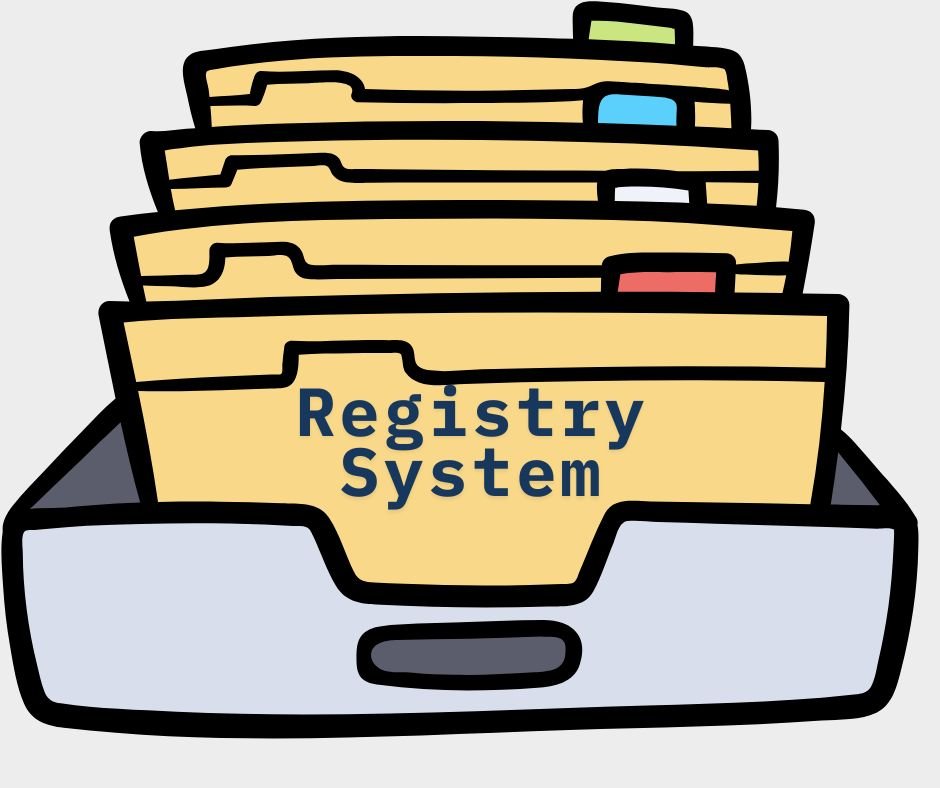When records or documents were first created, that is, from the beginning of the history of record keeping, people had a problem with their record keeping. In ancient times, the Mesopotamians probably had more records than other people. They preserved what they wrote. They wrote on writing materials that would not be destroyed. They wrote on writing materials such as clay tablets, tiles, stones, etc. They wrote on these writing materials. They wrote personal letters, letters, business contracts, religious matters, mathematical and scientific treaties, stories and other things. The amount of all these documents kept increasing. When the amount of official correspondence, laws, etc. increased, the problem of management arose. Perhaps the registry system was the first system of record management. This registry system was first started in ancient Rome.

In Rome, magistrates kept personal notes while they were in court. These personal notes were called Commentarii. These notes soon became known as the daily court journal or Commentarri diurni. This court journal was a chronological record of all incoming and outgoing documents, judicial reports, evidence, and other records. This daily court journal was given official status by the Roman government. From then on, the court journal was recognized as part of the public archives.
The registry system of documents of various government departments greatly influenced the practice of the church. Since there was no state management at that time, the church, that is, religious houses, kept documents in religious places. In ancient Rome, internal correspondence, originals, were kept in separate series, and copies of outgoing correspondence were kept in separate books. As government activities increased and paper for general use came into use, the volume of records increased in the second half of the fourteenth century. And this increased record management was mainly due to the advent of registry offices.
In the developed countries, the records of an office were kept in a series. This led to the formation of file units, in which outgoing and incoming correspondence were kept together. The file unit register was used to record the records and to identify the subjects and authors. The need for a file cabinet arose to organize each file unit. Since then, the use of file cabinets has been increasing.
1. German Registry System:
In Germany, the registry department is an administrative unit of the government. This department is responsible for the maintenance and use of government records. Every government office in Germany has a registry department. The registry system in Germany is decentralized at the departmental level. Each department has a registry office, which is equivalent to the executive branch of the federal government in the United States. This registry department receives mail from the central office. Then it enters it in the register. It indexes it and sends it to the appropriate officials. After returning, it categorizes the records according to a classification scheme. To carry out these tasks efficiently and effectively, the following activities are carried out:
1. Registers each individual document and assigns it a sequential number;
2. Creates a glossary of subjects and persons;
3. Assigns subject headings and arranges records externally according to that subject heading.
4. Indexes the actual files according to the classification scheme
They bound each file, that is, they arranged the documents inside the file. If the documents are very valuable, then some of the files are bound with covers. These bound files are marked with call marks. The bound files are placed horizontally and later, of course, the files are kept in file cabinets. The German registry office acts as an intermediary between the Chanceries and the archival institutions. The Germans have developed various methods and developments for classifying records. Public records are then organized by geographical or administrative unit (such as country, province, district, city or ward), by subject or by date.
Later, the German classification scheme used a four-digit system, which is a subdivision of the Dewey Decimal Classification. The first digit represents the main subject or large administrative unit. The second and third digits represent the main classification and sub-division, and the fourth digit represents the single file unit. The following example may make this clearer:
2-Mail service and operation
22-Internal postal regulations
220 Agreements with foreign postal administrations
2200-First file unit, usually identified by topic
2201-Second file unit
2203-Third file unit
Small government agencies may use the three-digit system. Larger and more complex cases may use the five-digit system. All offices use the same classification scheme. In Germany, the same system is used in central, departmental, district or branch offices and records are classified in the same way. Therefore, there is uniformity in the way records are organized in Germany.
2. England Registry System:
The King of England had the responsibility of writing royal letters to the priests. Later this duty was performed by the Chancellor. In 1199 AD, he began to keep important letters in parchment rolls in various places. Later, he also copied letters from outside the household and kept them in the system.
Later, he also arranged for copies of letters received from outside. In this, the entries in the rolls or registers were divided. The rolls of the Chancery were divided into three main series. The rolls of the English registry system thus formed the register. At present, the English registry system has been decentralized and taken to the judicial divisional level in Germany. At the divisional level, the offices receive correspondence from the central office and are responsible for classifying, sorting and storing records. Records are generally classified into two categories. For example:
A. Case file
B. Subject file
A file is usually a collection of documents kept in a folder or cover sheet. Files are organized by person, organization, place, or subject. In England, documents related to a subject are organized by subject, and documents related to organizations and individuals are organized by person, file, or organization. Subject headings are determined by analyzing the content of the documents.
3. Australian Registry System:
In Australia, domestic correspondence is filed separately and outgoing correspondence is kept in letter books. Originally, the British colonial system was followed in Australia. Domestic letters were entered in one place and outgoing letters in a separate document. Later, however, domestic and outgoing correspondence were entered in the same register and filed together. In filing, the “one person, one file” principle was followed, as in England.
In Australia, files are arranged in either a simple or complex manner. The simple method is known as the single number system. In this system, a file is given a single number and arranged in numerical order. The single number system was developed by the Commonwealth Public Service Board and is used in the Australian registry system. The Commonwealth Public Service Board recommends that a new file be opened when a letter or record on a new subject is received. The new letter is first entered in the register and is moved through the register. The last letter is filed when it is returned. After filing, it is sent to the file analyst. He or she will make a schedule, known as a subject schedule, if necessary.
A complex classification method is known as the multi-number or three-number method. In this method, a single file is grouped into two or more classes, but each of these classes is arranged numerically.



